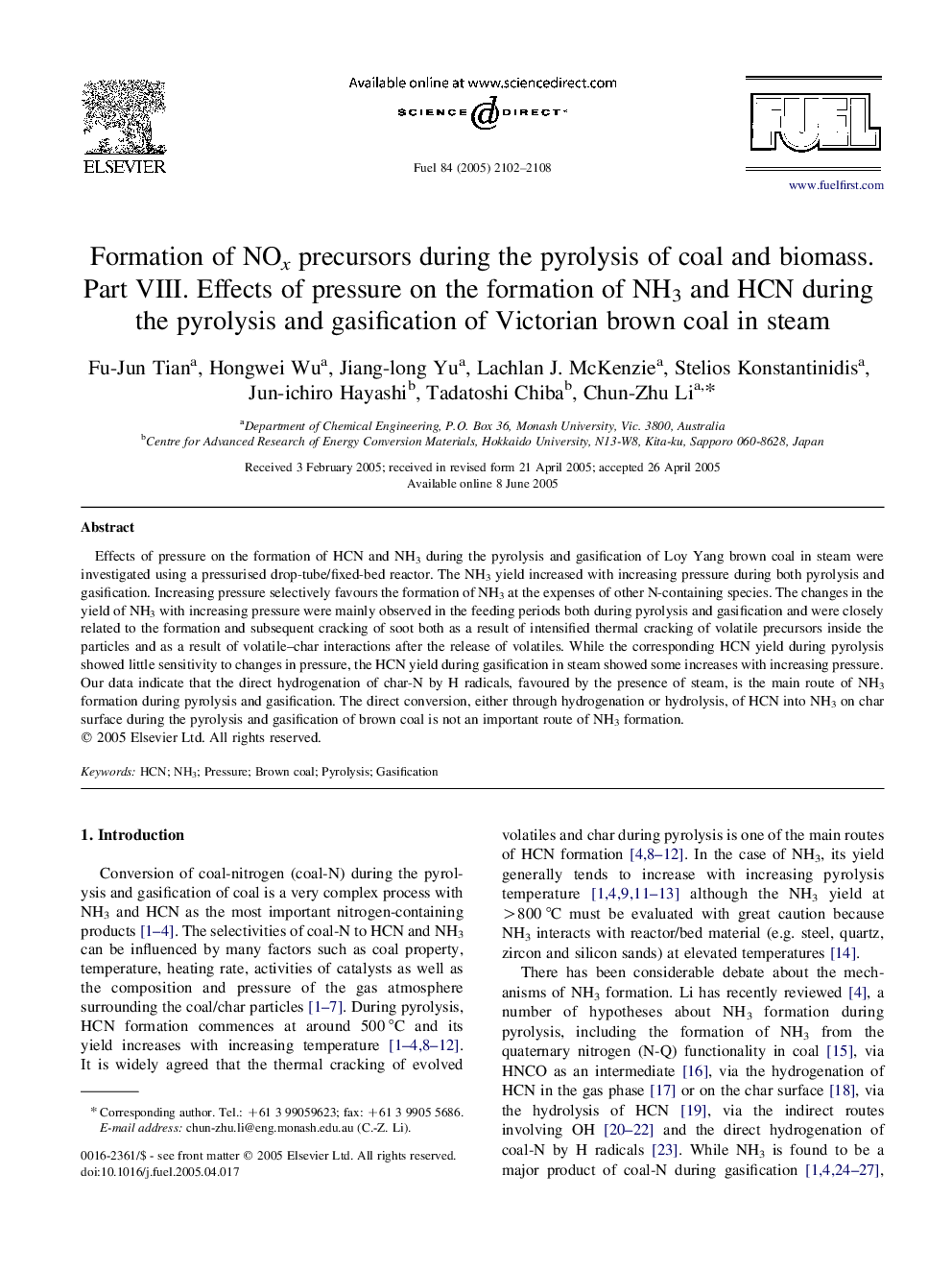| Article ID | Journal | Published Year | Pages | File Type |
|---|---|---|---|---|
| 208871 | Fuel | 2005 | 7 Pages |
Effects of pressure on the formation of HCN and NH3 during the pyrolysis and gasification of Loy Yang brown coal in steam were investigated using a pressurised drop-tube/fixed-bed reactor. The NH3 yield increased with increasing pressure during both pyrolysis and gasification. Increasing pressure selectively favours the formation of NH3 at the expenses of other N-containing species. The changes in the yield of NH3 with increasing pressure were mainly observed in the feeding periods both during pyrolysis and gasification and were closely related to the formation and subsequent cracking of soot both as a result of intensified thermal cracking of volatile precursors inside the particles and as a result of volatile–char interactions after the release of volatiles. While the corresponding HCN yield during pyrolysis showed little sensitivity to changes in pressure, the HCN yield during gasification in steam showed some increases with increasing pressure. Our data indicate that the direct hydrogenation of char-N by H radicals, favoured by the presence of steam, is the main route of NH3 formation during pyrolysis and gasification. The direct conversion, either through hydrogenation or hydrolysis, of HCN into NH3 on char surface during the pyrolysis and gasification of brown coal is not an important route of NH3 formation.
